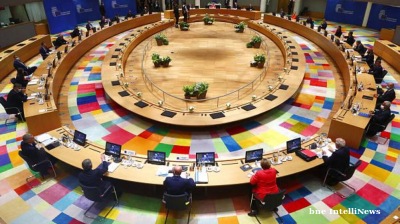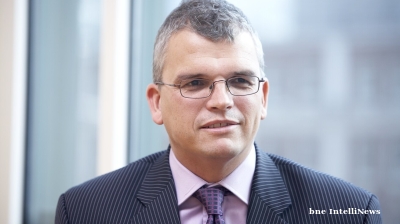The National Bank of Ukraine (NBU) cut rates for the fourth time this year on December 14 by 100bp to 15% thanks to falling inflation, which was 5.1% in November, as confirmed by Andriy Pishnyi, the head of the NBU. (chart)
Pishnyi highlighted that the decision aligns with the observed moderation in inflation and the positive shift in inflationary expectations and is aimed at preserving the attractiveness of hryvnia instruments for savings.
Despite the war and the heavy spending on defence, which now accounts for 20% of GDP, inflation has been falling steadily all year, thereby allowing the central bank to cut rates multiple times.
The consumer price growth in Ukraine of 5.1% is the lowest figure since December 2020. Looking ahead, the NBU anticipates that inflation will fall a little more to 5% by the close of 2023.
However, potential risks loom. Challenges such as logistical issues on the western borders and the expedited depletion of the substantial impact of harvests, particularly in vegetables, pose threats of accelerated inflation, the NBU said. Moreover, the persistently high level of uncertainty due to the war poses major risks to the economic outlook.
Most pressing of all the problems is the lack of international funding. Ukraine is running out of money again and of the $41bn deficit in Ukraine’s 2024 budget, the Ministry of Finance (MinFin) has already admitted that $29bn remains unaccounted for. The government has already prepared a Plan B contingency plan that simply calls for the printing presses to be turned back on if neither a $61bn aid package from the US or a €50bn aid package from the EU materialise within the immediate months. In that case inflation could soar again in 2024.
Data

Belarus reports modest GDP growth 1.6% in 8M25
Belarus’ economy expanded by 1.6% in the period from January to August 2025, according to preliminary estimates from the National Statistical Committee, state news agency BelTA reported on 17 September.

Most Ukrainians reject Russian peace plan, back continued resistance, poll shows
An overwhelming majority of Ukrainians remain committed to resisting Russia’s invasion and reject Moscow’s latest peace proposals, even as many recognise that the war is unlikely to end soon, according to a new survey by the KIIS.

Young Bulgarians turn to stocks over real estate, survey shows
Real estate remains the most popular option overall but younger investors are leading a shift towards stock market investing, says survey commissioned by Revolut.

State of global democracy - Statista
The Economist Democracy Index rates countries on the state of their governing system each year. In the latest edition, corresponding to the year 2024, only 25 countries (6.6% of the world's population) have been rated as "full democracies"



